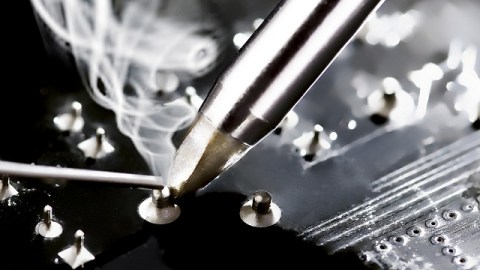Solving The Mystery Of “Tin Whiskers”

What’s the Latest Development?
University of South Carolina mechanical engineering doctoral student Yong Sun recently received an ACTA Student Award for his work on “tin whiskers,” microscopic fibers that grow from the tin used as solder on circuits in almost all electronic devices. Using digital image correlation to examine changes in the surfaces over time, he was able to deduce that “the growth of whiskers [was] caused by high-strain gradient built up inside the device.” Sun’s findings appeared in the journal Scripta Materialia.
What’s the Big Idea?
Tin whiskers have been blamed for the unexpected failures of commercial satellites, missile systems, and heart pacemakers, among many other electronic devices. They are even suspected as being behind brake failures in some Toyota cars and trucks. Scientists have known about the tin whisker problem for decades, but until now they had very little idea about how or why they formed. The addition of lead to tin solder helped control some whisker growth, but a 2006 European Union ban on lead in electronics had scientists wondering if the problem would ever be solved. Given this, Sun’s findings are “a very big deal,” says USC professor and research advisor Xiandong Li.
Photo Credit: Shutterstock.com





